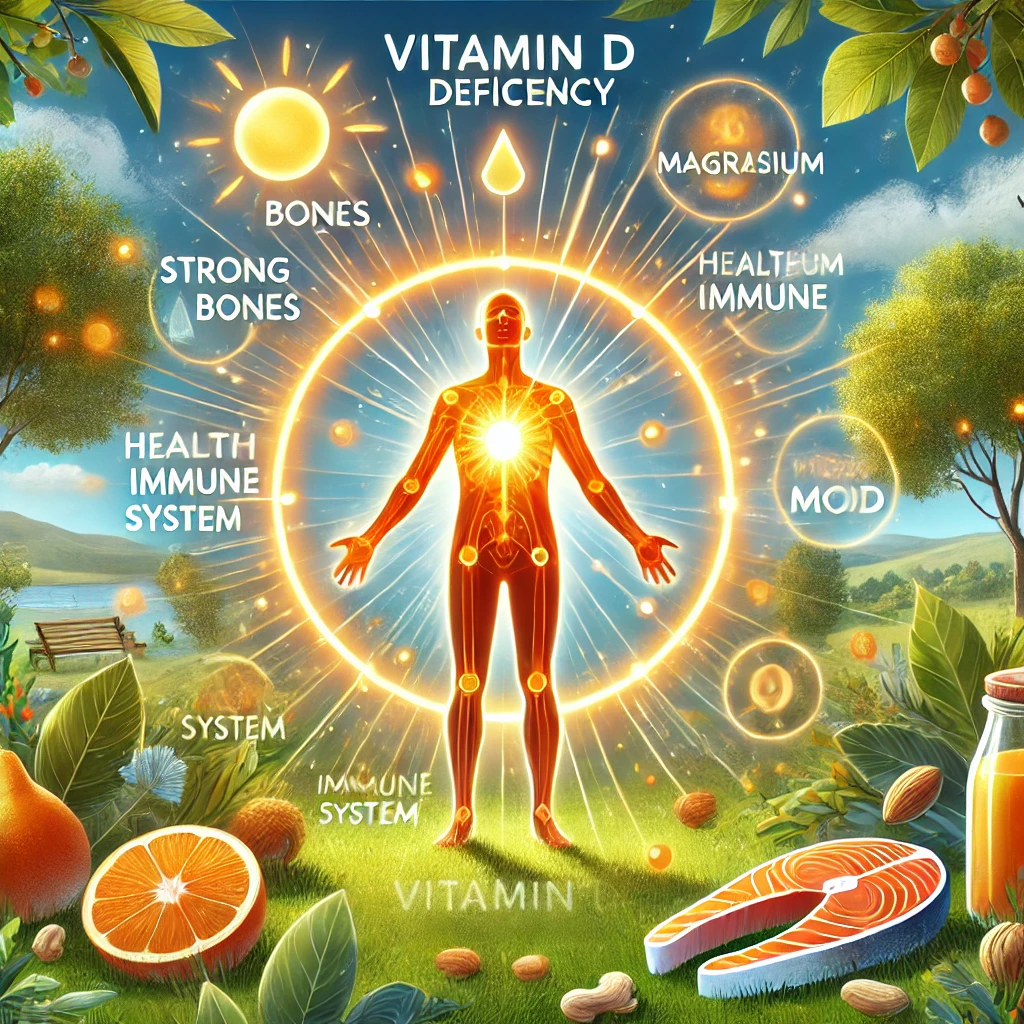Vitamin D deficiency is a widespread issue, affecting nearly 40% of Americans. Despite its prevalence, many people are unaware they’re deficient because the symptoms—fatigue, muscle pain, frequent illnesses, and low mood—are often mistaken for other health concerns. However, these subtle signs may be your body’s way of signaling an underlying problem that could lead to more serious health issues if left unaddressed.
Let’s explore why maintaining optimal vitamin D levels is crucial and how simple lifestyle changes can boost your health and well-being.
Why Vitamin D Is Essential
Vitamin D is more than just a “sunshine vitamin”; it’s a cornerstone of overall health. It plays a pivotal role in:
• Bone Health: Vitamin D helps your body absorb calcium, keeping your bones strong and reducing the risk of osteoporosis.
• Immune Function: It supports a robust immune system, helping to ward off illnesses.
• Chronic Disease Prevention: Optimal levels of vitamin D can reduce the risk of heart disease, cancer, and autoimmune disorders.
• Mood Regulation: Low vitamin D levels have been linked to depression and seasonal affective disorder (SAD).
The Optimal Vitamin D Range
Experts recommend maintaining vitamin D levels between 60-80 ng/mL for optimal health. Regular blood testing is the best way to determine if your levels are in this ideal range. If they’re not, it’s time to take action.
How to Increase Your Vitamin D Levels
1. Sunlight Exposure: Nature’s Best Source
Your body naturally produces vitamin D when exposed to sunlight. Spending just 10-20 minutes outdoors daily (without sunscreen) can significantly boost your levels. For maximum benefits:
• Aim for midday sun when UVB rays are strongest.
• Expose larger areas of skin, such as your arms and legs.
2. Incorporate Vitamin D-Rich Foods
While sunlight is the best source, you can also increase your vitamin D intake through your diet. Add these foods to your meals:
• Fatty fish like salmon, mackerel, and sardines.
• Fortified dairy products or plant-based alternatives.
• Egg yolks.
3. Consider Vitamin D Supplements
If you have limited sun exposure, darker skin tones, or a diet low in vitamin D, supplements may be necessary. Choose a vitamin D3 supplement (the form your body uses most effectively) and follow your healthcare provider’s dosage recommendations.
4. Don’t Forget Magnesium
Magnesium is essential for activating and utilizing vitamin D. Without enough magnesium, your body can’t fully benefit from vitamin D, no matter how much you take in. Include these magnesium-rich foods in your diet:
• Spinach, kale, and other leafy greens.
• Nuts and seeds, such as almonds and pumpkin seeds.
• Legumes like black beans and lentils.
The Long-Term Benefits of Healthy Vitamin D Levels
By ensuring your vitamin D levels are in the optimal range, you can:
• Strengthen your bones and teeth.
• Reduce the risk of chronic illnesses, including heart disease, cancer, and autoimmune conditions.
• Improve your immune system’s ability to fight off infections.
• Boost your mood and energy levels, enhancing your overall quality of life.
Take Control of Your Health
Don’t let a silent vitamin D deficiency impact your well-being. Start with these simple steps:
• Spend time outdoors daily.
• Eat a nutrient-rich diet that includes vitamin D and magnesium.
• Consider supplements if needed, and monitor your levels with regular blood tests.
Your health is worth the effort, and small changes can lead to big results. Take the first step toward a healthier, more energetic life by prioritizing your vitamin D levels today.
For more expert tips and insights on nutrition, fitness, and wellness, visit HealthFitnessPath.com for updated blog posts—your guide to a healthier, happier you!

